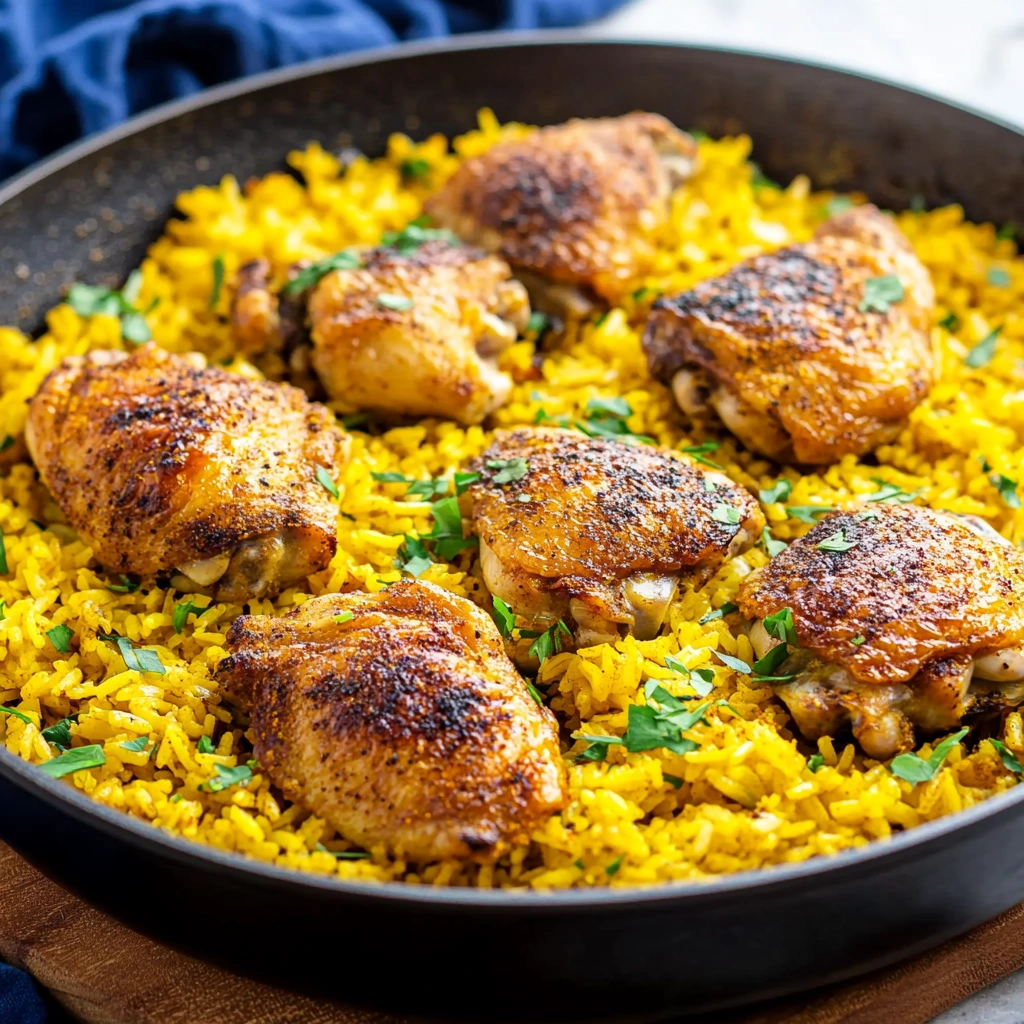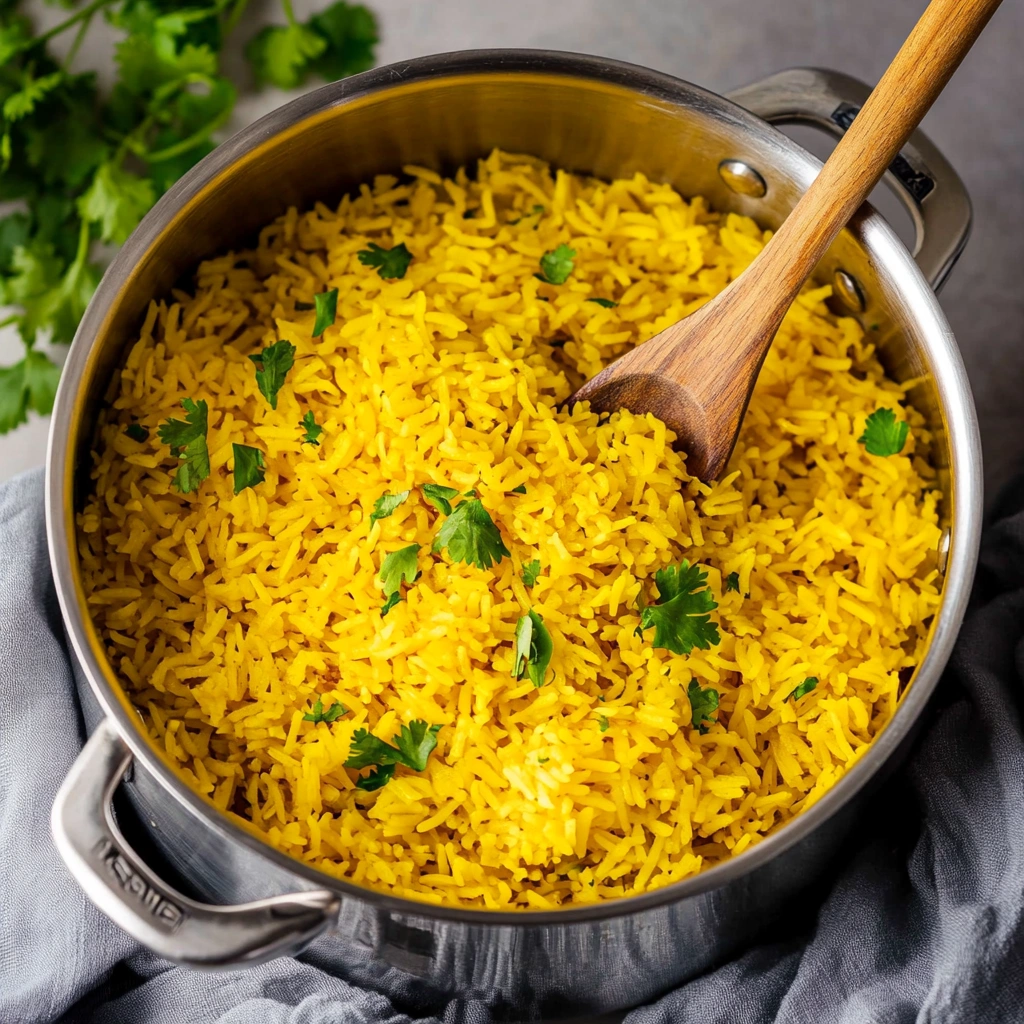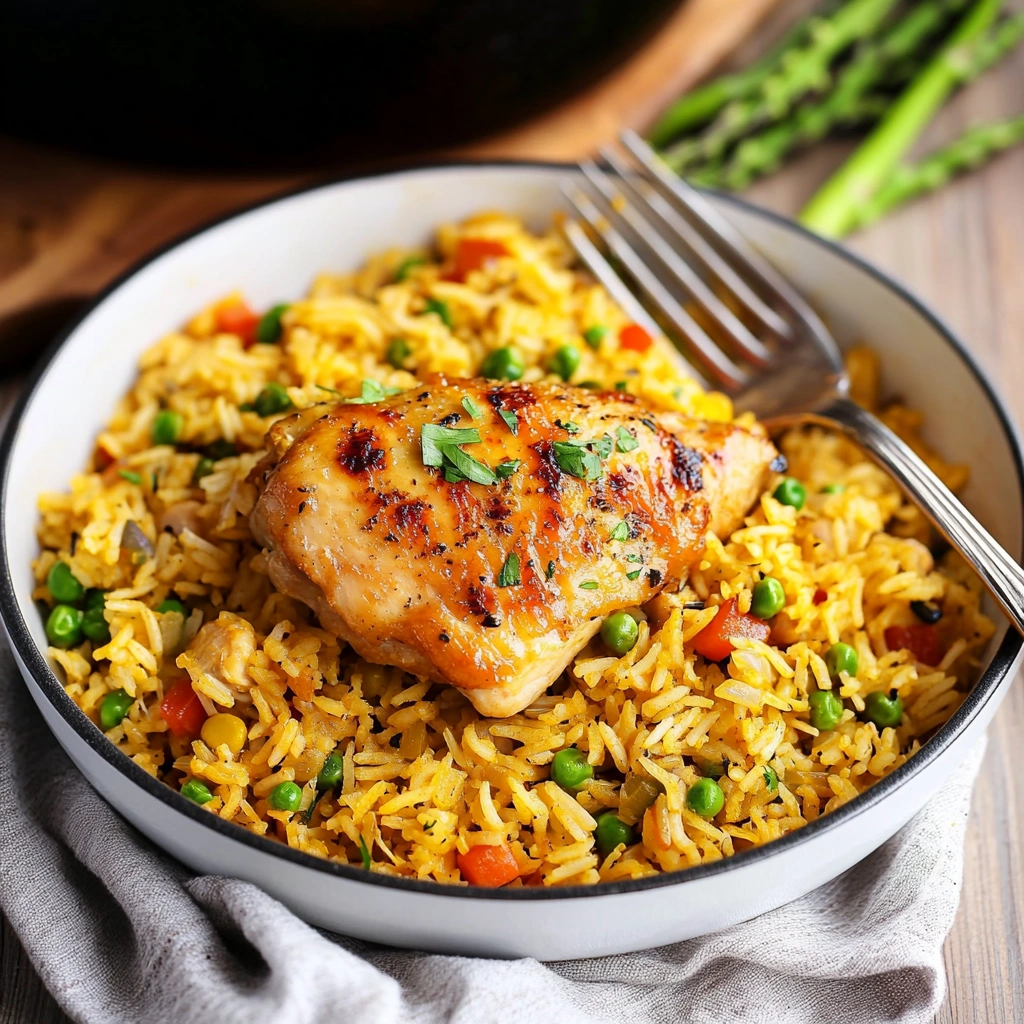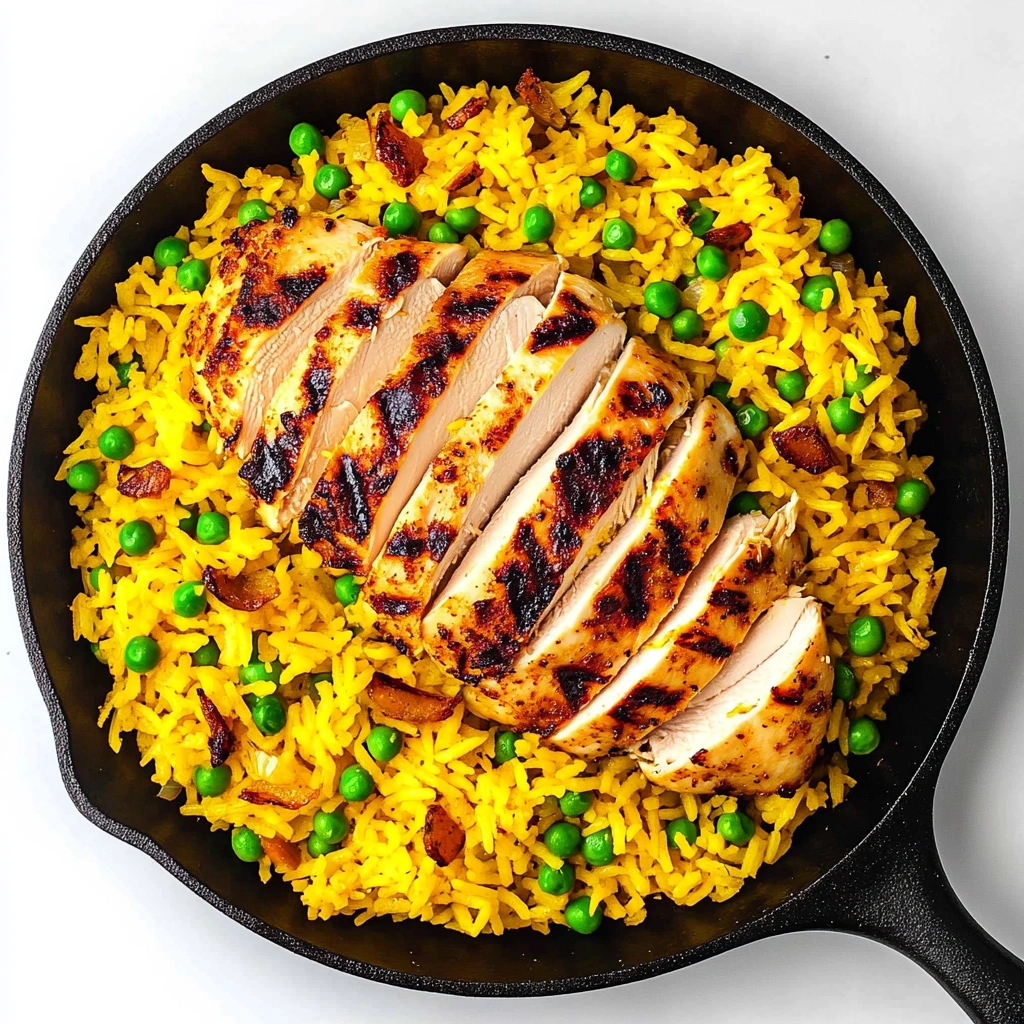When it comes to simple, comforting meals, yellow rice and chicken are hard to beat. But is yellow rice and chicken healthy? This flavorful combo is a staple in many households, but the health factor depends on the ingredients and how it’s prepared. Let’s dig into the details and see how this dish stacks up nutritionally—and how you can make it even better for your plate.
Table of Contents
Table of Contents

What’s in Yellow Rice and Chicken?
Before diving in, let’s look at what typically goes into this dish. Most yellow rice recipes include white rice (sometimes parboiled), turmeric (or saffron for a fancier version), garlic, onions, and chicken. Some variations add veggies like peas, carrots, or bell peppers. The chicken can be grilled, baked, or stewed depending on the style you’re going for.
The seasoning is where the magic happens—turmeric, garlic, and other spices give yellow rice its signature golden hue and bold flavor.
For a delicious take on this classic dish, check out this chicken and yellow rice recipe for inspiration!
How to Make Yellow Rice and Chicken Healthier
If you’re asking, “Is yellow rice and chicken healthy?”, the good news is that it can be—with the right ingredients and cooking methods. Here are some simple ways to make this dish even more nutritious without sacrificing flavor.
Choose Whole Grains Over White Rice
Traditional yellow rice is made with white rice, which has been stripped of fiber and nutrients. A healthier alternative is to use:
- Brown rice – Higher in fiber and nutrients, promoting better digestion.
- Quinoa – A protein-packed grain that adds a nutty flavor and boosts satiety.
- Cauliflower rice – A low-carb option for those watching their carb intake.
Switching to whole grains helps regulate blood sugar levels and keeps you fuller for longer.
Opt for Leaner Cuts of Chicken
The choice of chicken affects how healthy the dish is. For a lower-fat version:
- Use skinless chicken breast, which is high in protein and low in fat.
- If using chicken thighs or drumsticks, remove the skin to cut back on excess fat.
- Cook chicken by grilling, baking, or air frying instead of frying to reduce calories and unhealthy fats.
Reduce Sodium and Use Natural Seasonings
Many store-bought yellow rice mixes are high in sodium and artificial additives. To keep your dish heart-healthy:
- Use homemade yellow rice with turmeric, saffron, garlic, and onions.
- Replace salt with fresh herbs like parsley, cilantro, or oregano for added flavor.
- If using broth, opt for low-sodium or homemade broth to control salt intake.
Add More Vegetables for Extra Nutrients
A great way to boost the health benefits of yellow rice and chicken is to add a variety of vegetables. Some nutrient-dense options include:
- Bell peppers – Rich in vitamin C and antioxidants.
- Carrots – High in beta-carotene for eye health.
- Spinach or kale – Provides iron, fiber, and essential vitamins.
- Peas or corn – Adds natural sweetness and extra fiber.
Adding vegetables not only enhances the dish’s nutritional value but also makes it more colorful and flavorful.
Cook with Healthy Oils
Instead of using heavy oils or butter, choose heart-healthy alternatives:
- Olive oil – Rich in monounsaturated fats and antioxidants.
- Avocado oil – Has a high smoke point, making it great for cooking.
- Coconut oil (in moderation) – Adds a unique flavor but should be used sparingly.
Using healthier oils keeps the dish flavorful while reducing unhealthy fats.
Control Portion Sizes
Even though yellow rice and chicken is healthy, portion control is key, especially if you’re watching your calorie intake. To keep it balanced:
- Serve half your plate with vegetables, one-quarter with chicken, and one-quarter with rice.
- Avoid oversized portions of rice, as too many carbs can lead to blood sugar spikes.
- Eat slowly and savor each bite to prevent overeating.
By making these simple adjustments, you can turn yellow rice and chicken into a well-balanced, nutrient-dense meal that supports your overall health.
The Nutritional Lowdown
Let’s talk nutrition! Both yellow rice and chicken bring something to the table. Here’s how they stack up:
1. Yellow Rice
Yellow rice is essentially white rice dyed and flavored with turmeric or saffron. Turmeric is the real MVP here—it’s packed with curcumin, which has antioxidant and anti-inflammatory properties. However, since the base is usually white rice, it’s lower in fiber and nutrients compared to whole grains like brown rice or quinoa. Some store-bought mixes also sneak in added sodium, so keep an eye on the label.
Pro Tip: If you’re watching your health, try swapping white rice for brown rice or mixing the two for a fiber boost without sacrificing taste.

2. Chicken
Chicken is a lean source of protein that keeps you feeling full and supports muscle growth. If you’re using chicken breast, you’re getting all the protein with minimal fat. However, if you prefer thighs or drumsticks (let’s be real—they’re juicier), you’ll get slightly more fat but also more flavor.
Cooking Method Matters: Grilling or baking chicken is healthier than frying since it keeps the calorie count lower.
3. Add-Ins and Seasonings
The extras—like peas, carrots, and bell peppers—add a healthy dose of fiber, vitamins, and minerals. Meanwhile, garlic and turmeric don’t just boost flavor; they’re also good for you. Turmeric’s benefits range from reducing inflammation to supporting brain health, while garlic can support your immune system.
Heads-Up on Sodium: If you’re using a prepackaged yellow rice mix, check the sodium levels. Too much salt can quickly turn a healthy dish into one that’s not-so-great for your heart.
The Verdict: Is Yellow Rice and Chicken Healthy?
The short answer: It can be! This meal has all the makings of a balanced dish—protein from chicken, carbs from rice, and potentially fiber and vitamins from added veggies. That said, its healthiness depends on how you prepare it.
- Use lean cuts of chicken (like breasts) or remove the skin if you’re going for thighs.
- Opt for homemade yellow rice or a low-sodium store-bought option.
- Add a good mix of veggies to boost the fiber and nutrient content.
- Be mindful of portion sizes—too much rice can tip the carb balance.

Tips to Make Yellow Rice and Chicken Even Healthier
- Go Whole Grain: Swap out white rice for brown rice or quinoa for more fiber and a slower energy release.
- Add More Veggies: Bell peppers, zucchini, spinach—get creative with your favorites.
- Skip the Oil Overload: Use a light spray of olive oil instead of heavy drizzles.
- Limit Sodium: Season with fresh herbs like parsley or cilantro instead of relying solely on salt.
- Use Homemade Stock: If you’re cooking the rice in broth, homemade is the way to go—it’s lower in sodium and more flavorful.
The Benefits of Eating Yellow Rice and Chicken
- Balanced Nutrition: This dish can be a good source of protein, carbs, and healthy fats.
- Comfort Food with a Twist: It satisfies those carb cravings without going overboard.
- Versatile: You can customize the recipe to fit your dietary needs—add veggies, swap grains, or even go plant-based by subbing the chicken with tofu.
- Family-Friendly: Kids love the vibrant yellow color, and it’s easy to make in big batches.
How to Enjoy Yellow Rice and Chicken While Staying Healthy
If you’re wondering, “Is yellow rice and chicken healthy?”, the answer depends on your approach. While traditional recipes can be high in refined carbs and sodium, small adjustments can turn this dish into a well-balanced meal. Opting for homemade yellow rice with natural seasonings like turmeric and garlic ensures you get the flavor without unnecessary additives.
Is Yellow Rice and Chicken Healthy for Weight Loss?
Many people looking to lose weight ask, “Is yellow rice and chicken healthy?” when planning their meals. The key lies in portion control and ingredient choices. Swapping white rice for brown rice or quinoa increases fiber, keeping you full longer. Pairing it with lean chicken breast and lots of vegetables makes it a nutrient-dense, low-calorie meal that supports weight management.
Is Yellow Rice and Chicken Healthy for Heart Health?
When prepared with whole grains and lean protein, yellow rice and chicken can be heart-healthy. Brown rice or wild rice provides more fiber, helping to regulate cholesterol levels, while turmeric in yellow rice has anti-inflammatory properties that benefit heart health. To keep it even healthier, use low-sodium broth and limit added salt in your recipe.
Can You Eat Yellow Rice and Chicken on a Low-Carb Diet?
If you’re on a low-carb diet, you might wonder, “Is yellow rice and chicken healthy?” for your lifestyle. Traditional yellow rice is high in carbohydrates, but you can make a low-carb version by using cauliflower rice instead. This swap significantly reduces the carb content while still delivering the same rich flavors when seasoned with turmeric, garlic, and other spices.
Is Yellow Rice and Chicken Healthy for Meal Prep?
For those who love meal prepping, yellow rice and chicken is a fantastic choice. It stores well in the fridge and reheats easily, making it a convenient, nutritious option for busy days. To keep it fresh, store portions separately—chicken in one container and rice in another—to maintain the best texture and flavor. Adding a mix of roasted or steamed vegetables to your meal prep can enhance its nutritional value even more.
FAQs
1. Is yellow rice and chicken healthy for diabetics?
Yellow rice and chicken can be healthy for diabetics if made with whole grains like brown rice or quinoa, which have a lower glycemic index than white rice. Pairing it with lean chicken and fiber-rich vegetables helps regulate blood sugar levels. Avoid store-bought yellow rice mixes, as they often contain added sugars and high sodium.
2. Is yellow rice and chicken healthy for bodybuilding?
Yes! Yellow rice and chicken provide a great balance of protein and carbohydrates, making it an excellent meal for muscle recovery and growth. Opt for grilled or baked chicken breast to maximize protein intake while keeping fat levels low. Adding nutrient-dense veggies like spinach or bell peppers can further enhance the meal’s benefits.
3. Is yellow rice and chicken healthy for kids?
Yellow rice and chicken can be a nutritious meal for kids, especially when made with natural ingredients. Turmeric provides anti-inflammatory benefits, while chicken offers high-quality protein for growth. To make it healthier, use low-sodium broth, add extra veggies, and choose whole-grain rice for more fiber.
4. Is yellow rice and chicken healthy for digestion?
This dish can support digestion when made with fiber-rich whole grains and vegetables. Brown rice or quinoa improves gut health, while turmeric has anti-inflammatory properties that may aid digestion. However, if prepared with too much oil or sodium, it could lead to bloating or discomfort, so keep ingredients balanced for the best results.
Final Thoughts
Yellow rice and chicken is a dish that’s as tasty as it is versatile. Is yellow rice and chicken healthy? Absolutely, when you’re mindful about the ingredients and preparation. Whether you’re feeding a crowd or meal-prepping for the week, it can be a nutritious choice with a few simple tweaks. Focus on whole grains, lean proteins, and plenty of veggies to keep it balanced. And don’t be afraid to play around with the recipe to make it your own—you’ve got this!
Want even more delicious ideas? Check out our Pinterest page for mouthwatering recipes and kitchen tips!

